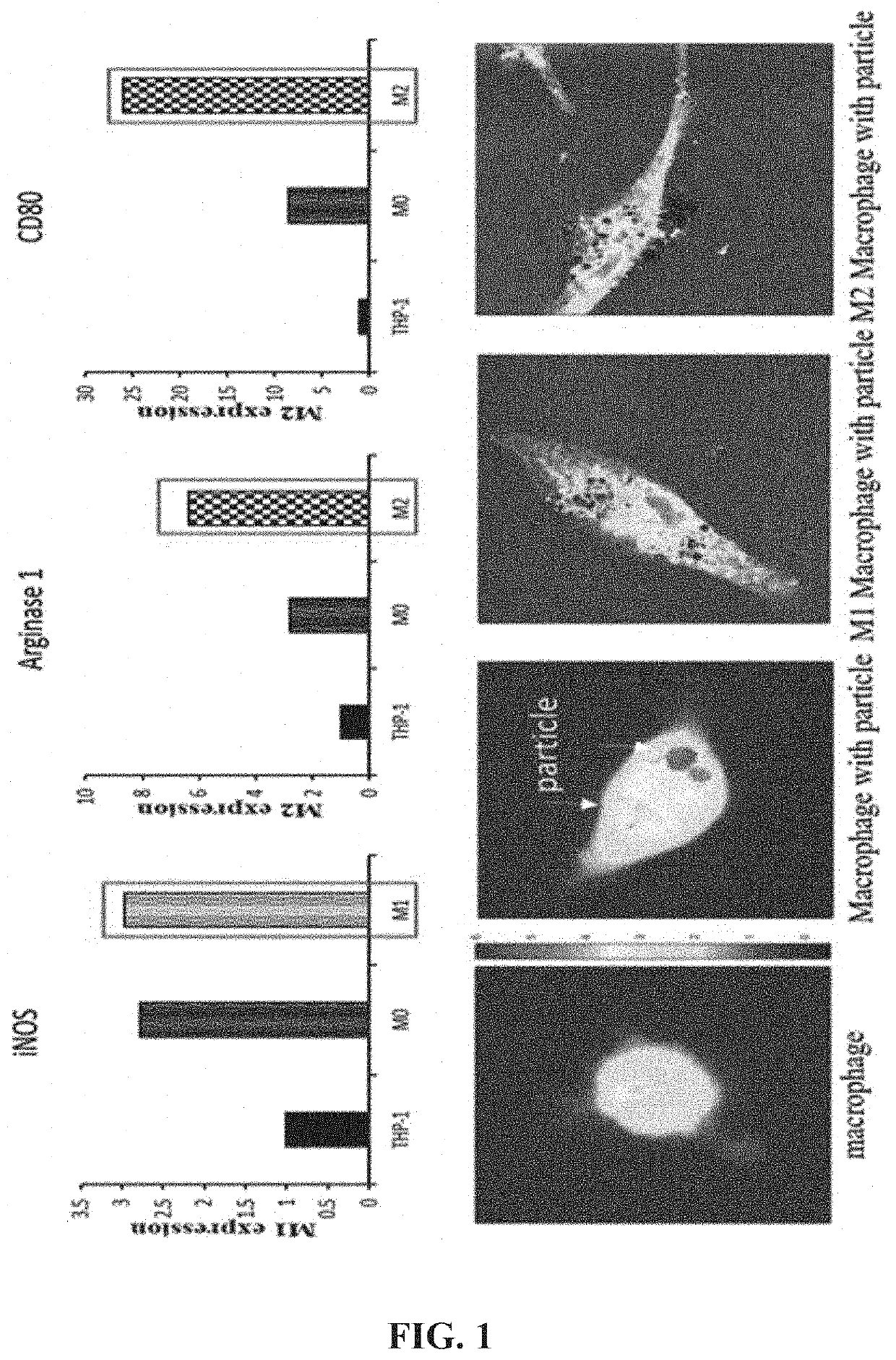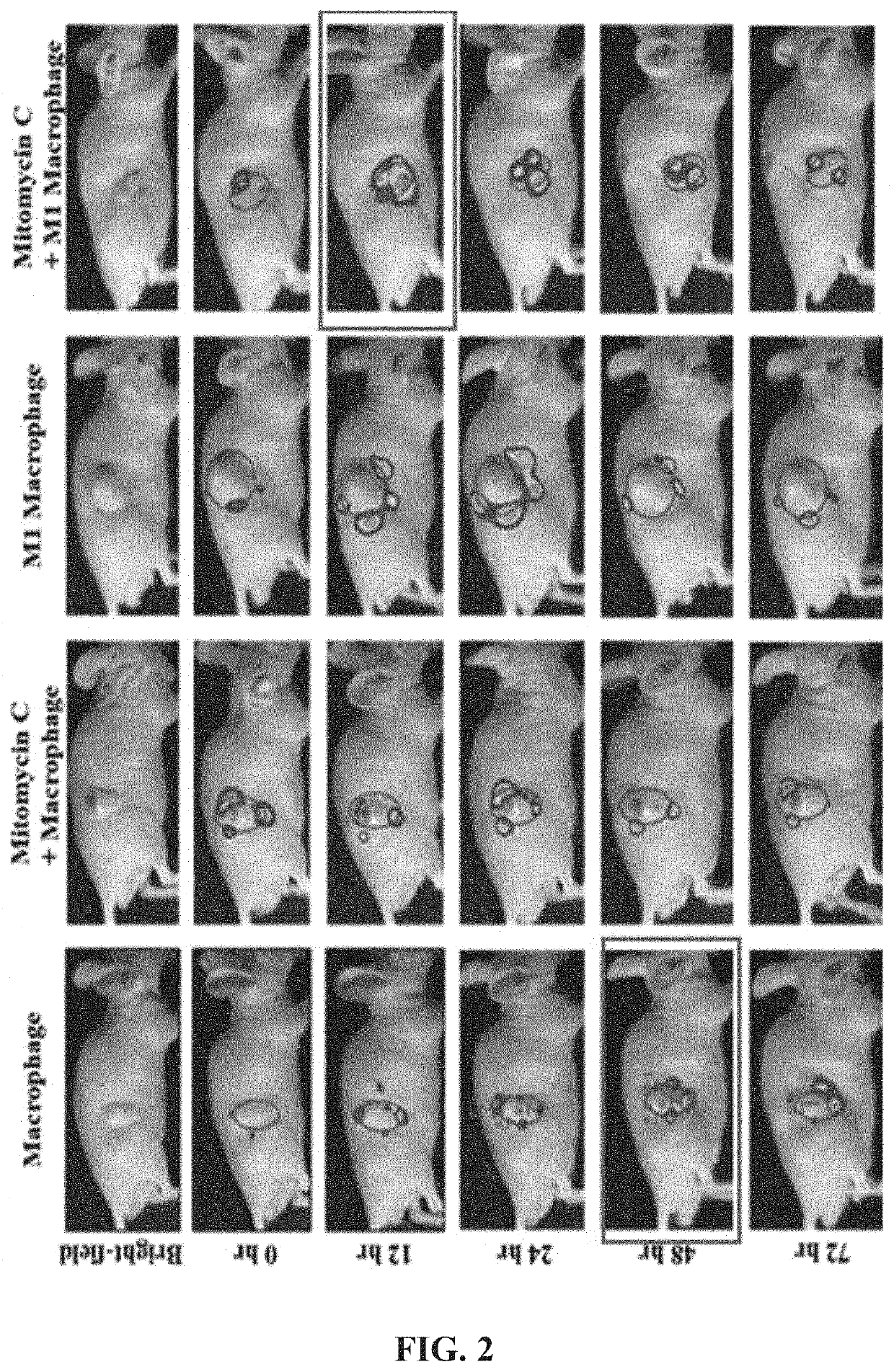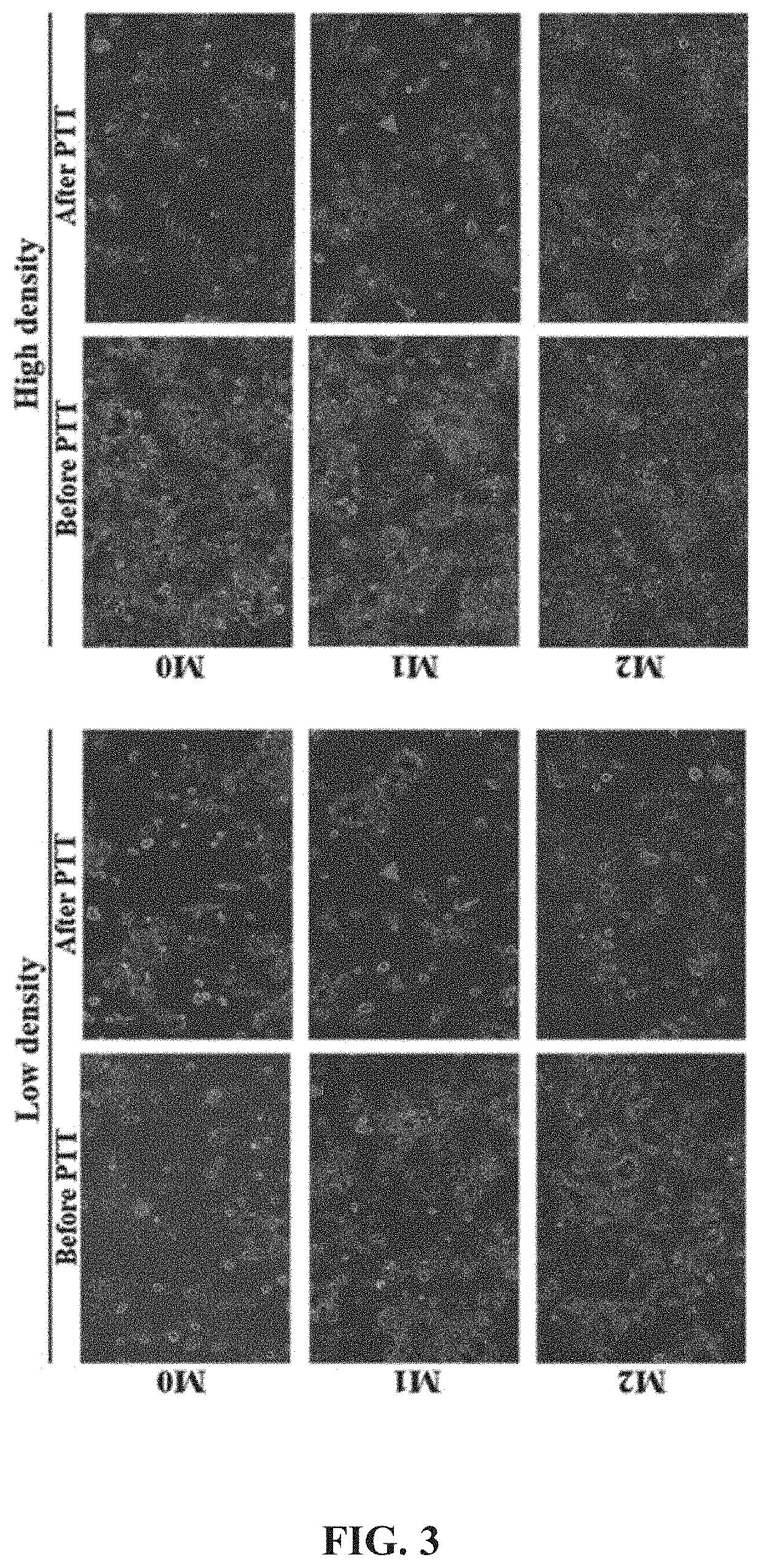Cancer cell-targeted drug delivery carrier and composition for promoting photo-thermal treatment effects, both of which contain m1 macrophages as active ingredient
- Summary
- Abstract
- Description
- Claims
- Application Information
AI Technical Summary
Benefits of technology
Problems solved by technology
Method used
Image
Examples
examples
[0073]The present disclosure may have various modifications and may have various examples. Thus, hereinafter, specific examples are illustrated in the drawings and described in detail in the detailed description. However, this is not intended to limit the present disclosure to specific examples. The disclosure should be understood as including all variations, equivalents to, and substitutes included in the spirit and scope of the present disclosure. In describing the present disclosure, when it is determined that a detailed description of a related known step or element may obscure the gist of the present disclosure, a detailed description thereof will be omitted.
example
Example 1. Preparation of M1 Macrophage
[0074]For the study of effective photo-thermal treatment method, we tried to identify the effects based on different types of macrophages according to varying differentiation methods. M1 macrophages is an anti-inflammatory macrophage. In order to differentiate macrophages into M1 macrophage, macrophages were first treated with PMA (Phorbol-12 Myristate 13-Acetate) to induce the M0 state, and then the M0 state was rested for 6 days. Then, the M0 macrophages were treated with IFN-γ (Interferon gamma) at a concentration of 200 μg / ml for 24 hours. To identify differentiation thereof into M1 macrophage, iNOS (Inducible nitric oxide synthase) mRNA expression levels were identified.
[0075]Further, for differentiation of macrophages into M2 macrophages related to tumor growth and metastasis, macrophages were first treated with PMA to induce the M0 state, and the M0 state was rested for 6 days. Subsequently, the M0 macrophages were treated with IL-4 at a...
example 2
on of Nanoparticle-Loaded Macrophages
[0077]After preparing the PLGA-core gold nanoshells and putting the same in a macrophages culture medium, loading thereof into the macrophages were induced at room temperature for 2 hours using an orbital shaker. Then, after culturing for 2 hours in an incubator at 37° C., floating cells were removed, and only adherent cells were separated therefrom and were used.
PUM
| Property | Measurement | Unit |
|---|---|---|
| Time | aaaaa | aaaaa |
| Concentration | aaaaa | aaaaa |
| Concentration | aaaaa | aaaaa |
Abstract
Description
Claims
Application Information
 Login to View More
Login to View More - R&D
- Intellectual Property
- Life Sciences
- Materials
- Tech Scout
- Unparalleled Data Quality
- Higher Quality Content
- 60% Fewer Hallucinations
Browse by: Latest US Patents, China's latest patents, Technical Efficacy Thesaurus, Application Domain, Technology Topic, Popular Technical Reports.
© 2025 PatSnap. All rights reserved.Legal|Privacy policy|Modern Slavery Act Transparency Statement|Sitemap|About US| Contact US: help@patsnap.com



